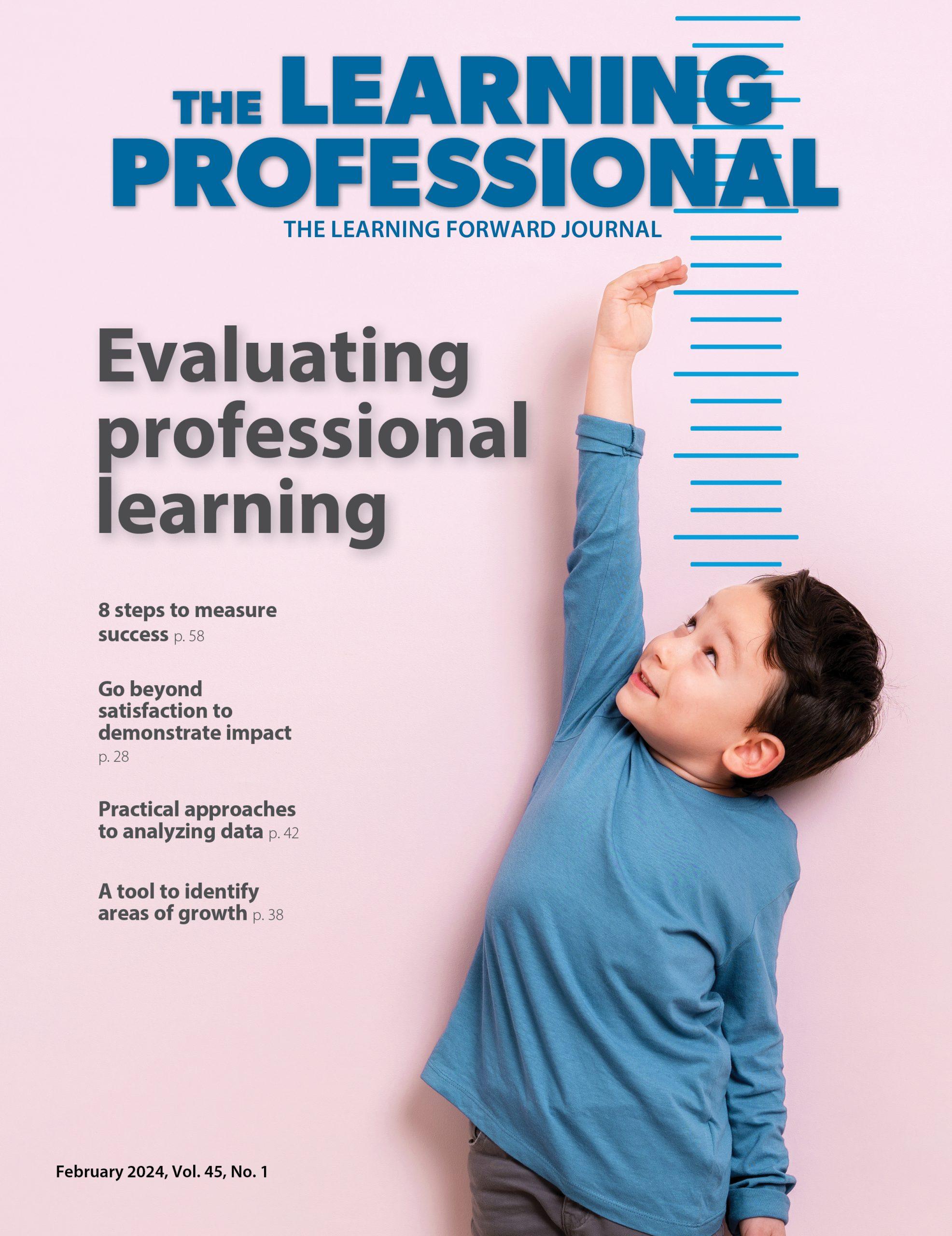In Yashir's shoes
A principal gains insight by shadowing an English language learner student
By Learning Forward
October 2011
Vol. 32 No. 5
Read the remaining content with membership access. Join or log in below to continue.
Sed ut perspiciatis unde omnis iste natus error sit voluptatem accusantium doloremque laudantium, totam rem aperiam, eaque ipsa quae ab illo inventore veritatis et quasi architecto beatae vitae dicta sunt explicabo. Nemo enim ipsam voluptatem quia voluptas sit aspernatur aut odit aut fugit, sed quia consequuntur magni dolores eos qui ratione voluptatem sequi nesciunt. Neque porro quisquam est, qui dolorem ipsum quia dolor sit amet, consectetur, adipisci velit, sed quia non numquam eius modi tempora incidunt ut labore et dolore magnam aliquam quaerat voluptatem.
Roosevelt Elementary School
Spokane, Wash.
Grades: K-6
Enrollment: 440
Staff: 80
Racial/ethnic mix:
White: 71.4%
Black: 5.7%
Hispanic: a7.9%
Asian/Pacific Islander: 10.9%
Native American: 3.4%
Other: NA
Limited English proficient: 8.4%
Free/reduced lunch: 60.9%
Special education: 23.8%
Contact: Shari Farris, former principal
Email: shari.farris@vanguard.edu
Make Shadowing a Purposeful and Practical Experience for Leaders
Often, principals and other school leaders would like to use shadowing as a strategy for solving problems of student learning but are unsure how to fit this practice into schedules that are already filled with observations, walk-throughs, and other classroom visit protocols. The key to successful and purposeful shadowing experiences begins first with establishing a clear purpose for the experience. What do you hope to learn by shadowing? How will you use what you have learned? The following tips may be useful:
Research how others have used shadowing. Read articles about establishing the foundational trust with families that is necessary to implement shadowing experiences while remaining sensitive to any cultural implications (Baeder, 2010).
Share your purpose, goals, and intentions with the teaching and support staff in your school. It is essential that they know that you are entering their classrooms for shadowing experiences as a learner, not an evaluator.
Think about your evidence-gathering tool(s). Will you carry paper for note taking? Will you record your experience? How will you capture the verbal and nonverbal exchanges without intruding on the learning environment?
Communicate with staff that this should be uninterrupted time. Principals are often called out of observations and meetings for various reasons. Be clear and enlist others in the logistics of the experience. The shadowing experience is best done in the normal flow of a student’s day rather than broken up into chunks over several days.
Partner with families to set up your experience. Seek permission from families, and clearly define your purpose and goals for the experience. Finally, close the loop with families regarding your visit. Debrief by offering all of the strengths you see with their daughter or son in the classroom setting, and allow them to ask questions (Ginsberg, in press).
Share your experience with colleagues. It was not until I heard about the benefits of shadowing from another leader that I even considered the experience.
Open this experience to teachers or support staff. Although the logistics may look different, the same outcomes (a deeper understanding of motivation and engagement) will result.
References
Baeder, A. (2010, February). Stepping into students’ worlds. Educational Leadership, 67(5), 56-60.
Beck, M. & Malley, J. (2003, March). A pedagogy of belonging. CYC Online, 50. Available at www.cyc-net.org/cyc-online/cycol-0303-belonging.html.
Easton, L.B. (2004). Powerful designs for professional learning. Oxford, OH: NSDC.
Ginsberg, M. (in press). Transforming professional learning: A system to enhance teacher and student motivation. Thousand Oaks, CA: Corwin Press
Ginsberg, M.B. & Wlodkowski, R.J. (2009). Diversity and motivation: Culturally responsive teaching in college. San Francisco: Jossey-Bass.
Valdes, G. (1998, August/September). The world outside and inside schools: Language and immigrant children. Educational Researcher, 27(6), 4-18.
Learning Forward is the only professional association devoted exclusively to those who work in educator professional development. We help our members plan, implement, and measure high-quality professional learning so they can achieve success with their systems, schools, and students.
Recent Issues
LEARNING TO PIVOT
August 2024
Sometimes new information and situations call for major change. This issue...
GLOBAL PERSPECTIVES
June 2024
What does professional learning look like around the world? This issue...
WHERE TECHNOLOGY CAN TAKE US
April 2024
Technology is both a topic and a tool for professional learning. This...
EVALUATING PROFESSIONAL LEARNING
February 2024
How do you know your professional learning is working? This issue digs...








